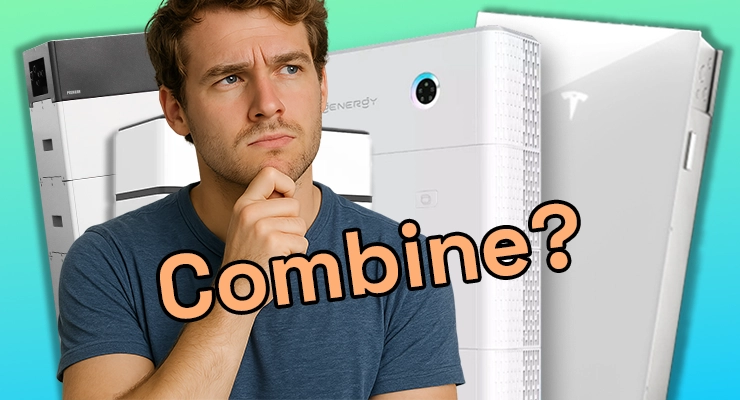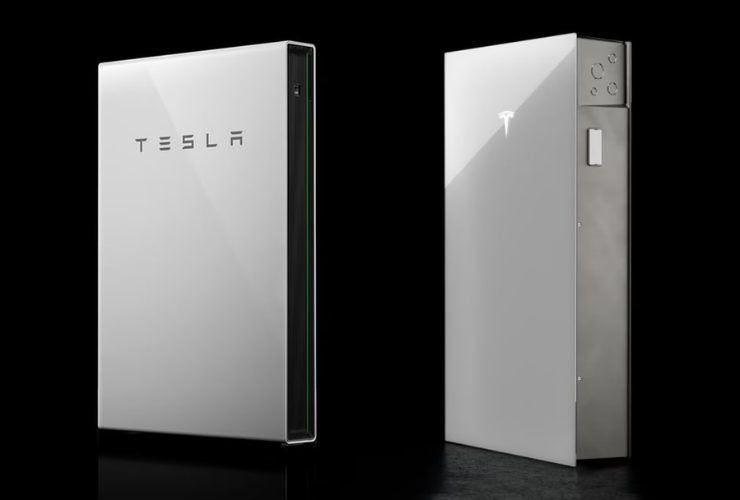Fast read
As a general rule, it is strongly advised not to combine different battery brands within a single home energy storage system. Doing so can create significant safety risks, lead to poor performance, and will almost certainly void the manufacturer's warranties for all components involved. The core of the issue lies in the incompatibility between different manufacturers' Battery Management Systems (BMS), which are critical for safe and efficient operation.
Mixing Battery Brands: A Cost-Saving Tactic or a Costly Mistake?
It’s a question that comes up often, especially for homeowners looking to expand an existing solar battery setup or trying to find the best deal by combining components. You might have an older system and want to add new capacity, or perhaps you’ve found a discounted battery from a different manufacturer. On the surface, it seems like a practical way to save money or upgrade, but delving into the technical, safety, and warranty-related reasons reveals why this is one area where mixing and matching is not recommended.
This article will walk you through why combining battery brands is a risky strategy, explaining the crucial role of the battery’s internal ‘brain’, the performance issues you’d likely face, and the impact it has on your warranty and support.
The critical role of the Battery Management System (BMS)
At the heart of every modern solar battery, especially lithium-ion types, is a sophisticated electronic brain called the Battery Management System, or BMS. The BMS is non-negotiable for safety and performance; it constantly monitors the battery’s state, including:
- The voltage of each individual cell.
- The battery’s overall temperature.
- The rate of charge and discharge.
- The overall state of charge (how full it is).
The primary job of the BMS is to protect the battery by keeping it within its safe operating limits. It prevents overcharging, over-discharging, and overheating, any of which can permanently damage the battery cells or, in a worst-case scenario, lead to dangerous situations like a fire.
When you install a battery system from a single manufacturer, the inverter and all the battery modules are designed to speak the same digital language. For instance, an integrated system like a Sungrow hybrid inverter paired with Sungrow batteries, or a Sigenergy SigenStor, which combines the inverter and battery in one unit, ensures seamless communication. The inverter knows exactly how to charge and discharge the batteries based on the precise data it receives from their unified BMS.
When you mix brands, this vital communication breaks down. Each manufacturer uses its own proprietary BMS with unique software and communication protocols. An inverter from one brand simply won’t understand the signals from another brand’s BMS. This communication failure can lead to the inverter incorrectly charging or discharging the mismatched battery, leading to serious risks.
What are the performance and safety risks?
Mixing battery brands, or even different models from the same brand with different internal components, introduces a host of problems that can undermine your energy goals.
First, your system’s performance will suffer. Mismatched batteries will have different internal resistance, charge/discharge rates, and even slight voltage variations. This imbalance forces the entire system to operate at the level of the weakest link. The stronger battery may be underutilised while the weaker one is overworked, leading to faster degradation and a shorter overall lifespan for the entire bank. Efficiency is lost, meaning you store and use less of your precious solar energy.
More importantly, there are significant safety concerns. Without clear communication, an inverter might continue to push charge into a battery that is already full, or draw power from one that is dangerously depleted. This can cause cells to overheat, which is a primary cause of thermal runaway—a dangerous and self-sustaining fire that is difficult to extinguish. The Australian Standard for battery installation, AS/NZS 5139, outlines the hazards associated with battery systems and underscores the importance of correctly integrated components to mitigate these risks.
You will almost certainly void your warranty
Beyond the technical dangers, mixing battery brands has serious financial and support implications. Virtually every battery manufacturer’s warranty states that the product must be installed and used as part of a compatible, approved system. Using a battery with an unapproved inverter or alongside another brand’s battery is a clear breach of these terms.
If any part of your mixed-brand system fails—whether it’s the inverter, a battery module, or even a single cell—you will likely find yourself with no warranty coverage. The battery manufacturer may argue that the fault was caused by the incompatible inverter, and the inverter manufacturer will point the finger at the mismatched battery. This leaves you, the homeowner, to cover the full cost of replacement and repairs.
Your installer’s workmanship warranty may also be voided, as no accredited professional would recommend or guarantee an installation that goes against manufacturer specifications and established industry best practices.
Are there any exceptions?
In the vast majority of residential grid-connected systems, there are no safe or practical exceptions to this rule. The integrated nature of modern battery systems relies on the seamless communication between approved components.
The only time you might see different batteries used in highly customised, off-grid scenarios is when they are set up as entirely separate systems with their own dedicated chargers and switches, preventing them from ever interacting directly. This is a complex setup requiring expert design and is not a viable or safe solution for a typical home energy storage system.
The safest path forward: Stick to a single, compatible system
While the idea of combining different battery brands to save money is tempting, the risks far outweigh any potential benefit. The potential for poor performance, serious safety hazards, and voided warranties makes it a decision that is almost certain to cost you more in the long run.
When planning for a new battery or looking to expand an existing one, the most responsible and effective approach is to use components from a single manufacturer that are designed and certified to work together. If you have an existing system, the best way to add more capacity is to use additional, compatible modules from the same brand. If that’s not possible, replacing the entire battery bank with a new, unified system is the correct course of action.
Always work with a Clean Energy Council (CEC) accredited installer who can advise you on a safe, compliant, and high-performing system. They will ensure all components are fully compatible and that your investment is protected by robust manufacturer warranties. If you need help finding trusted, local professionals, Your Energy Answers can connect you with accredited installers in your area who can provide expert guidance for your specific needs.





